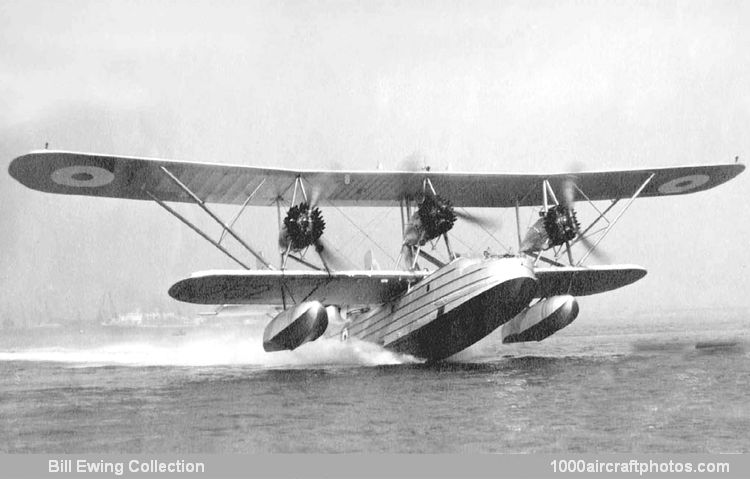09/30/2011. Remarks by Johan Visschedijk: "The success of the Southampton as a reconnaissance flying boat led the Air Ministry to consider larger and more powerful types to cover probable Service and civil demands for greater lifting capacity and longer range. At the end of 1929 Supermarine had five project flying boat designs under examination - a Southampton replacement, with a civil version called the Sea Hawk, and the Air Yacht, all with three engines; a four-engined civil type; and the civil 'Giant', as it was unofficially called, with six engines.
Of all these projects, two only were completed and flown, the Air Yacht and the Southampton replacement known as Southampton Mk.X. The only reason for the latter designation was to link the design with its namesake by way of reflected glory. In the event the Southampton Mk.X was not a success but it had the effect of causing much rethinking about Supermarine design policy, as related later in connection with the Scapa and Stranraer.
The Southampton Mk.X was allocated the serial N252 reserved originally for development aircraft. It was quite unlike its namesake and appeared as a three-engined sesquiplane, that is, with a much wider-span upper wing. While the stainless steel hull was the responsibility of Supermarine, the wing superstructure including the engine mountings was entrusted to Vickers at Weybridge, which had become associated with Woolston in the Vickers (Aviation) merger of 1928. The curious thing about these two major parts of the aeroplane was that they both came out considerably overweight on design estimates with the cumulative result that the flight performance of the Southampton Mk.X was well below specification requirements.
There could be no mistaking the performance recorded during the initial trials of the Southampton Mk.X which took place at the end of March 1930 from Southampton Water, for it was flown by Captain J. 'Mutt' Summers, who was rapidly becoming one of the most experienced test pilots in the country. Official tests made later by Felixstowe marine experimental base confirmed the poor performance with the Armstrong Siddeley Jaguar VIC engines, and subsequent changes to the Armstrong Siddeley Panthers and Bristol Jupiter XFBMs of greater power failed to make up the leeway.
An attempt to lighten the superstructure by reducing the size of the wing tip floats and modifying the outer strut bracing and float supports also was insufficient to reduce the structure weight by a significant margin. The specified empty weight was to be 10,090 lb (4,577 kg) but at Felixstowe, in November 1930, with the original Jaguar engines, the actual machine weighed 13,427 lb (6,090 kg), while the all-up weight was 21,117 lb (9,579 kg) as against the normal specified 17,580 lb (7,974 kg).
In practical terms this meant that the speed of the Southampton Mk.X was some 15 mph (24 kmh) below that required, the climb was woefully slower than the six minutes to 5,000 ft (1,524 m) predicted, and the ultimate specified ceiling of some 15,000 ft (4,572 m) was hopelessly over-estimated as the greatest height reached at Felixstowe was 6,400 ft (1,950). With the Jupiter XFBM engines (aircraft was redesignated Type 185), these figures were bettered by a fair margin, top speed being raised to 130 mph (209 kmh) at 4,920 ft (1,500 m), still 5 mph (8 kmh) below specification, and the service ceiling to 11,800 ft (3,597 m).
Subsequently the type was re-engined with Jupiter XIF engines, and fitted with an enclosed flight deck, and the aircraft was redesignated to Type 188. Finally major modifications were made when the Panther engines were re-installed in Townend rings with the outer interplane struts moved outboard and smaller floats fitted, with under-wing tanks compensating for the loss of reserve fuel space in the larger floats of the original design."
